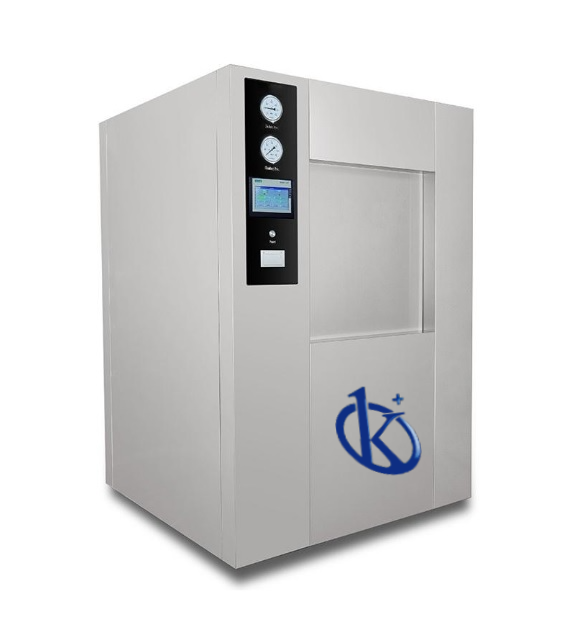An autoclave is a thick-walled metal container with airtight seal that allows working with steam at high pressure and high temperature, which serves to sterilize medical or laboratory material. The autoclave inactivates all viruses and bacteria, although it has been known that some microorganisms can withstand autoclave temperatures. The autoclaves are used in mainly sterilization applications and in the chemical industry. Currently, due to its effectiveness and low cost, it is still one of the most widely used sterilization methods.
Many autoclaves are used to sterilize equipment and supplies by subjecting them to high pressure saturated steam at 121 ° C for about 15 to 20 minutes depending on the size of the load and the contents. The autoclave was invented by Charles Chamberland in 1879.
Steam sterilization is the most effective method, since it acts by coagulating the proteins of the microorganisms leading to their destruction.
What are the autoclave types?
- By Gravity: The air is removed by gravity, when the steam enters the chamber, the cold air that is in it tends to exit through the conduit that is in the lower part of the chamber. This process is very slow and favors the permanence of residual air in the chamber.
- Prevail: They have a vacuum pump that quickly removes all the air from the chamber, so that the steam is introduced at a higher speed inside the chamber, improving the efficiency of the autoclave by eliminating the air pockets and increasing the speed of the process. It is a much more efficient system than others.
Sterilization indicators
There are physical, chemical and biological indicators that can be used to ensure that an autoclave reaches the correct temperature during the correct time. If an untreated or poorly treated article can be confused with a treated article, there is a risk that they mix, which, in some areas, such as surgery, is critical. Some physical indicators consist of an alloy designed to melt only after being subjected to a given temperature during the corresponding retention time. If the alloy melts, the change will be visible.
The chemical indicators are in the medical package and the autoclave tape, since they change color once the correct conditions have been met, indicating that the object inside the package, or under the tape, has been properly processed. The biological indicators contain spores of a heat-resistant bacterium, Geobacillus stearothermophilus. If the autoclave does not reach the proper temperature, the spores will germinate when they are incubated and their metabolism will change the color of a pH-sensitive chemical.
What considerations should you have when employing them?
The autoclaves use high pressure and high temperature steam for sterilization. The risks are potential and therefore it is necessary to follow certain considerations.
Possible Hazards:
- Skin burns may occur when handling the walls and door of the autoclave chamber.
- The residual steam that leaves the autoclave and the materials at the end of the cycle of use.
- Hand and arm injuries when closing the door.
- Bodily injury if there is an explosion.
To ensure the health and safety of the personnel using the autoclave, it is important to:
- Train personnel regarding the proper use of the autoclave.
- The name of the person responsible for the autoclave must be placed near the autoclave.
- It is the supervisor’s responsibility to ensure that employees are trained before operating any autoclave unit.
- The procedural and instructional documents provided by the manufacturer must be followed.
- Personal protective clothing and equipment must be worn when loading and unloading the autoclave.
- Autoclaves must be inspected at least once a year.
- The spore strips can be used to validate the efficiency of the autoclave operation.
At Kalstein we have designed autoclaves that efficiently meet the stringent sterilization requirements of large health centers. That’s why we invite you to take a look at our one of the autoclaves available HERE

